Eden in Brooklyn: How the Brooklyn Botanic Garden Grew
Philanthropist Alfred Tredway White planted the seeds in the 1890s.

Visitors at the Lily Pool Terrace in late summer 2019. Photo by Susan De Vries
Horticulture and the study of botany have been a part of Brooklyn since its inception. Following a long history of European colonizers bringing their favorite plants to new lands, the Dutch, English and other settlers carried a tradition of horticulture to New York. Once settled in, they piggybacked on the practices and plants used by the Lenape people, and also introduced species of plants new to the continent.
Farms spread across Long Island in the eighteenth century. Here in Brooklyn, wealthy gentlemen farmers planted ornamental orchards and lush gardens on their suburban estates. One of the most celebrated was that of merchant Philip Livingston, a signer of the Declaration of Independence who owned a large 40-acre estate complete with orchards and formal gardens on the bluffs of Brooklyn Heights.
The idea to establish a botanic garden in Brooklyn dates back to 1825, when one Andre Parmentier established a garden in what is now Prospect Heights. As Brooklyn expanded, farmland was replaced by urban development. The demand for specialty plants and flowers was filled by commercial nurseries and greenhouses established primarily in sparsely developed neighborhoods with lots of open land.
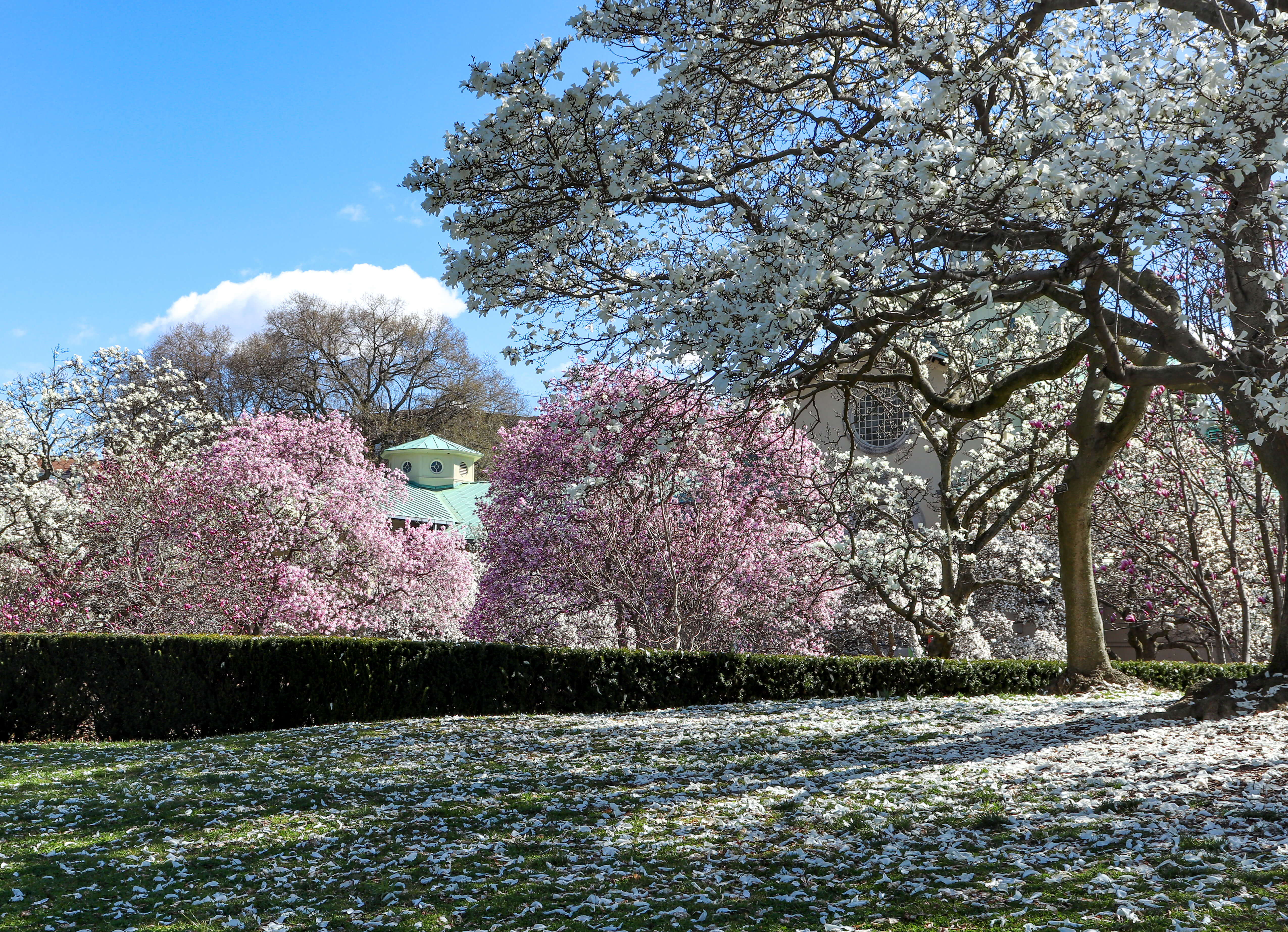
But the idea of a European-style botanic garden remained. In 1855, two prominent Brooklynites, Thomas Hunt and Henry A. Kent, raised almost $60,000 to establish a botanic garden near the western end of Green-Wood Cemetery. But it was never built. Another garden was planned near Litchfield Manor, in Prospect Park, but that one went nowhere, too.
Wealthy Brooklynites still wanted exotic gardens. By the end of the century, Brooklyn Heights was home to expansive private greenhouses and gardens that masked the warehouses lining the river below them. Similar private gardens and greenhouses dotted the estates of Bedford and Flatbush. The greatest garden of all, Prospect Park, was filled with specialty gardens, vales and plantings, magnanimously open to the public. The creation and growing popularity of the park was directly tied to the creation of the Brooklyn Botanic Garden.
Botanical One-Upmanship
Brooklyn’s movers and shakers saw the beauty and benefit of a large public park like Central Park and did Manhattan one better with the creation of Prospect Park. The original architect of Central Park, Frederic Viele, was chosen to design the new park. He incorporated Mount Prospect Reservoir as well as Flatbush Avenue into his design. Land was purchased, but before construction could begin, the Civil War started.
While Viele was off designing fortifications for the Union Army, Calvert Vaux was asked by the park committee to look at the plans. As we all know, he and Frederick Law Olmsted took over the project, just as they did for Central Park, and created the park we know today. They moved the boundaries to the west of Flatbush Avenue, excluding the entire Mount Prospect area.
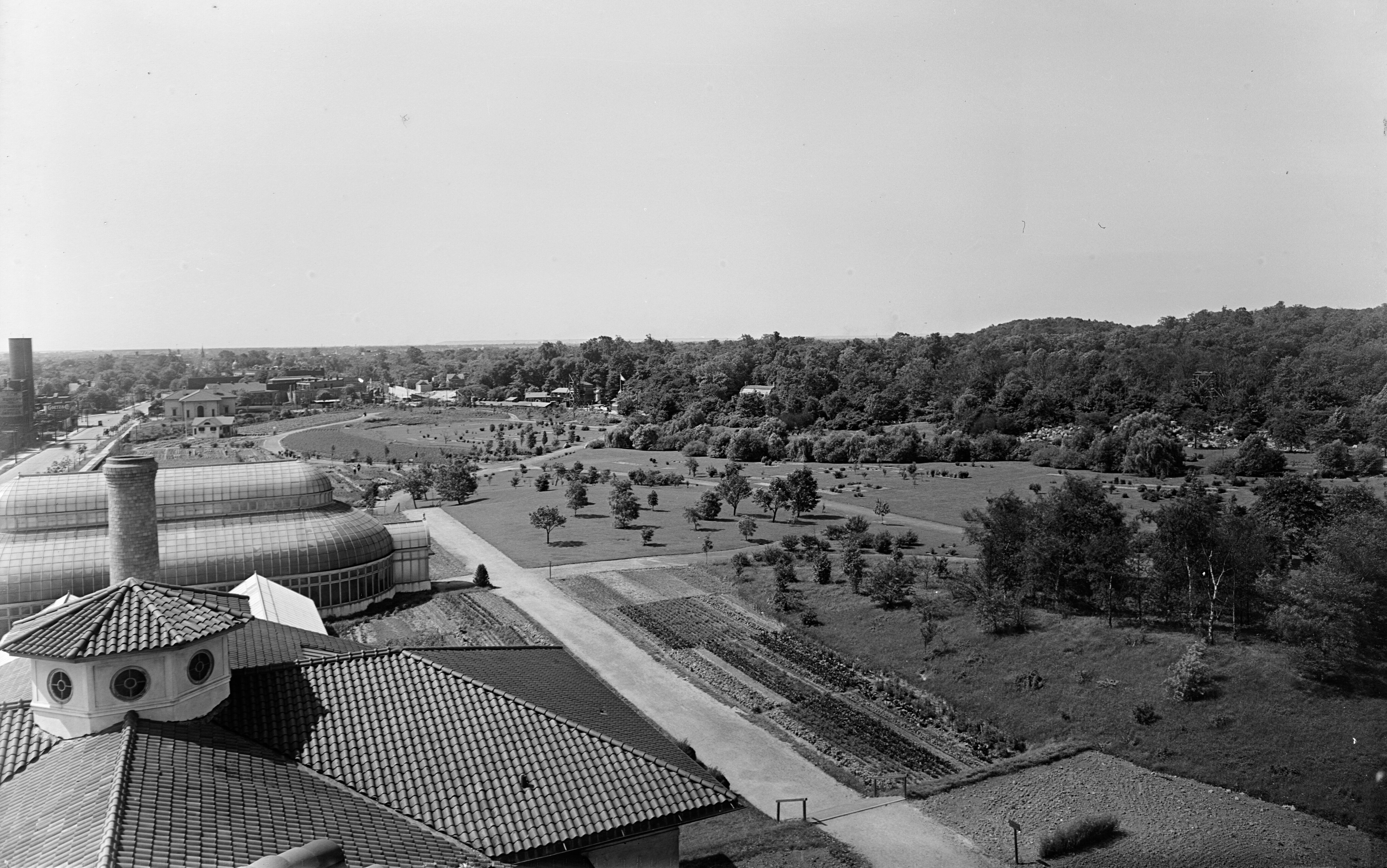
The city was left with a lot of land around Mount Prospect Reservoir, which they named the Eastside Lands. The Parks Department had been using some of the land as an ash and refuse dump while they built Prospect Park. It was marshy and pockmarked with ponds, as was most of the land used in Prospect Park, all the legacy of the glacial activity that created Long Island.
In 1890, the Brooklyn Institute of Arts and Science began laying plans for a huge structure that would be a combination of the Metropolitan Museum of Art, the Museum of Natural History, and a university-like setting for artistic and scientific study and display. It was to be built on the Eastside Lands, which were renamed Institute Park.
They petitioned the state and private citizens for funds and held an architectural competition in 1892, which was won by McKim, Mead & White. The first section of the museum opened to the public in 1897. The building we know today as the Brooklyn Museum is only a quarter of the planned campus. Had it been completed according to plan, it would have been the largest museum in the world.
Philanthropist Alfred Tredway White, one of Brooklyn’s most important businessmen, established a committee to advocate for a botanic garden near the Institute. In May of 1897, the New York State Legislature approved the establishment of “a botanic garden and arboretum for the collection and propagation of plants, flowers, shrubs and trees and also for the advancement of knowledge and research pertaining to botanical science, the exhibition of ornamental and decorative horticulture, and for entertainment, recreation and education of the general public,” the Brooklyn Eagle reported at the time.
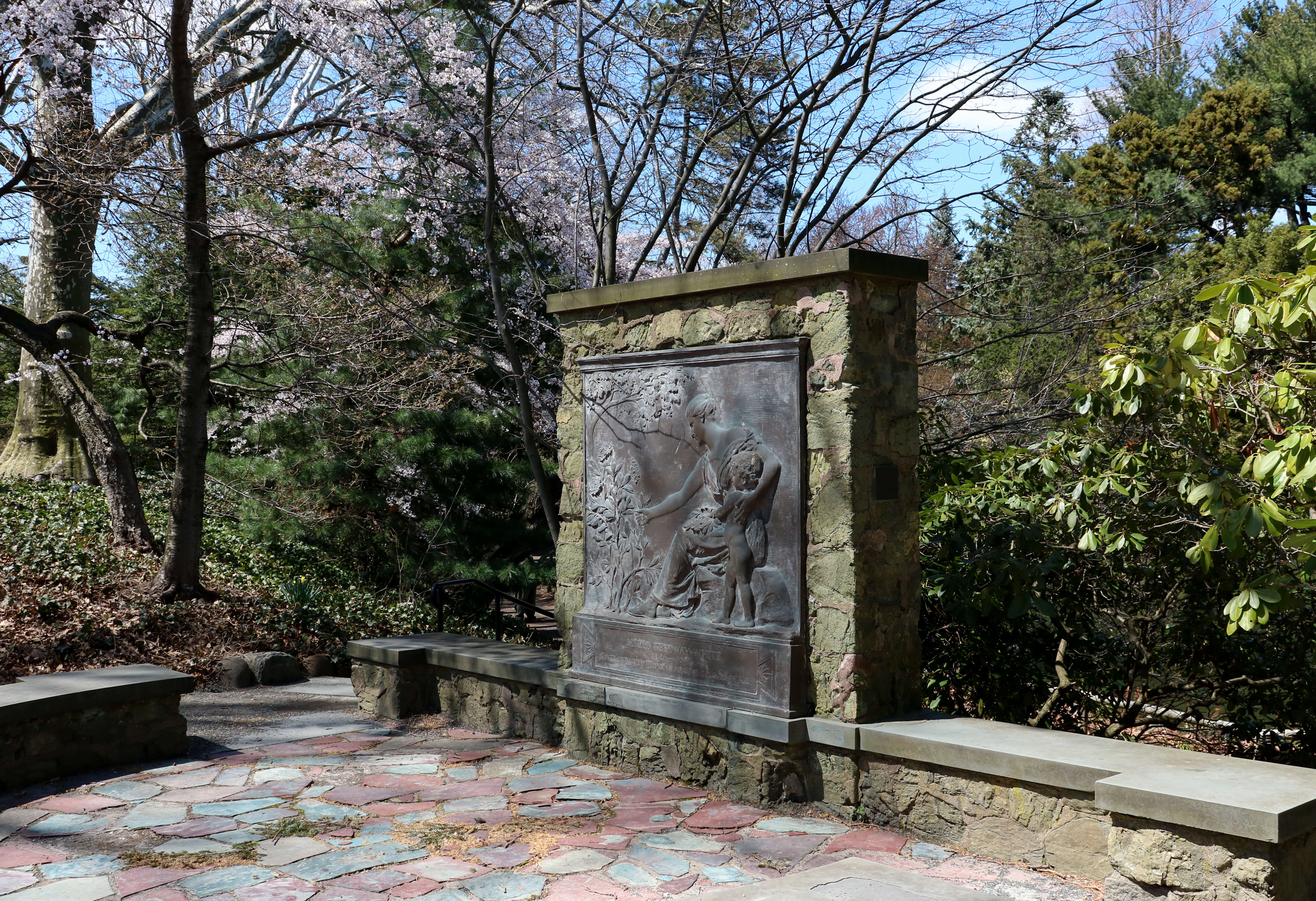
Meanwhile, across the river, advocates for the New York Botanical Garden were raising money in Manhattan. The city obtained the Lorillard family estate in the Bronx for parkland in 1889. Part of it was set aside for a botanical garden in 1891. Plans were made, legislation enacted, and the building began. The last and most memorable structure to be built was the great glass and steel conservatory, which opened in 1902. Brooklyn wanted to make sure their botanic garden was just as spectacular, if not better.
Back in Brooklyn, plans were also under way to create a large, impressive central library at the junction of Flatbush Avenue and Eastern Parkway. Institute Park would be part of a huge civic center which would include the park, the museum, the reservoir, a botanic garden and the library. Paired with Prospect Park and Grand Army Plaza just across the street, this would be a magnificent White Cities-City Beautiful jewel in Brooklyn’s crown.
The Parks Department cleaned up the refuse in Institute Park, burying a lot of it. They graded the land somewhat, planted trees, shrubs and grass and created a large lake in the center, complete with a fountain. Institute Park was opened to the public with great fanfare in November of 1903. This park was seen as an interim step to a complete botanic garden.
Creating the Botanic Garden
The Brooklyn Institute of Arts and Sciences was charged with creating the Botanic Garden. They hired the sons of Frederick Law Olmsted, Frederick Jr. and John Charles, working as Olmsted Brothers, to lay out the first comprehensive site plan. In 1910, the Institute of Arts and Sciences hired C. Stuart Gager to be the first director. Gager was working in Missouri at the time. Even before moving to Brooklyn, he began working closely with Olmsted Brothers on the design for the grounds and with McKim, Mead & White, who were commissioned to design the garden’s laboratory and plant houses. The Institute of Arts and Sciences was placed in charge of the garden. At that point in their history, they directed the Brooklyn Museum, the Botanic Garden, the Brooklyn Children’s Museum and the Brooklyn Academy of Music.
The first part of the garden, containing the Native Flora Garden, then called the Local Flora Section, opened to the public on May 13, 1911. It featured plants native to a hundred mile radius of Brooklyn, including beds of wildflowers arranged by plant family and evolutionary relationship.
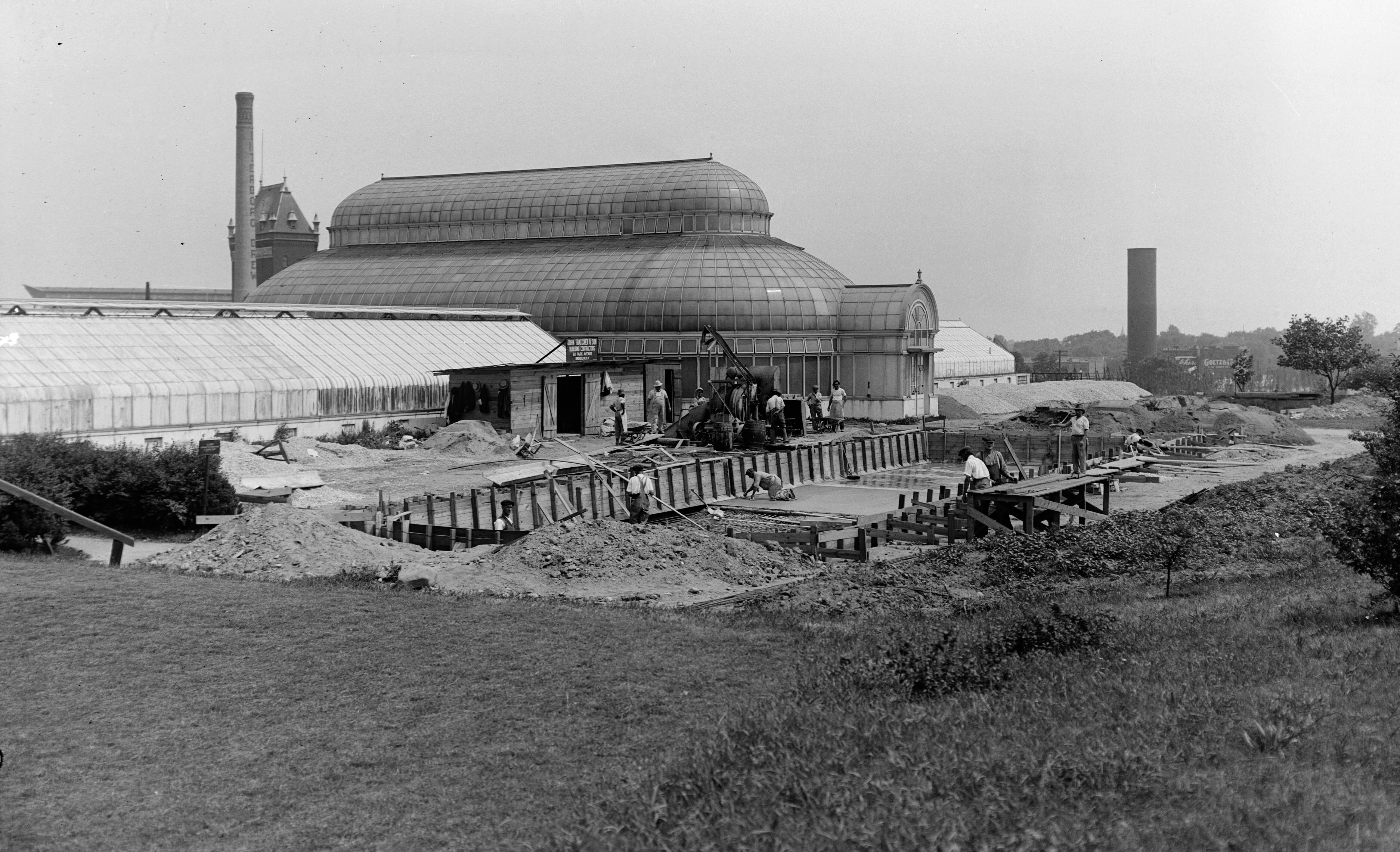
Director Gager was working with the second generation of McKim, Mead & White architects to design the garden’s structures. By the time the Botanic Garden’s buildings were being designed, McKim and White were both dead. William Rutherford Mead, the managing partner, passed the day to day running of his firm on to their successors. Architect William Kendall is credited for his design of the garden’s Laboratory Administration Building.
Kendall was a fine addition to the upscale firm. He was a Harvard man, with an architecture degree from MIT. He followed that up with years of study in Europe before coming home and joining McKim, Mead & White. He worked closely with Charles Follen McKim and designed some of the firm’s best known New York civic buildings, including Manhattan’s Central Post Office building on Thirty-Second Street and the Municipal Building on Centre Street. He was therefore quite proficient in designing the Beaux-Arts masterpieces that the firm is known for. The Botanic Garden’s Laboratory and Conservatory (now the Administration and Palm House) would be a little different.
The mission of the Brooklyn Institute was equally divided between art and science. The garden’s scientists were in place to study genetics and plant propagation, improve crops, and carry out other important research. Some of the greenhouses attached to the labs attracted visitors for their exotic and unusual plants, while others were solely for laboratory use.
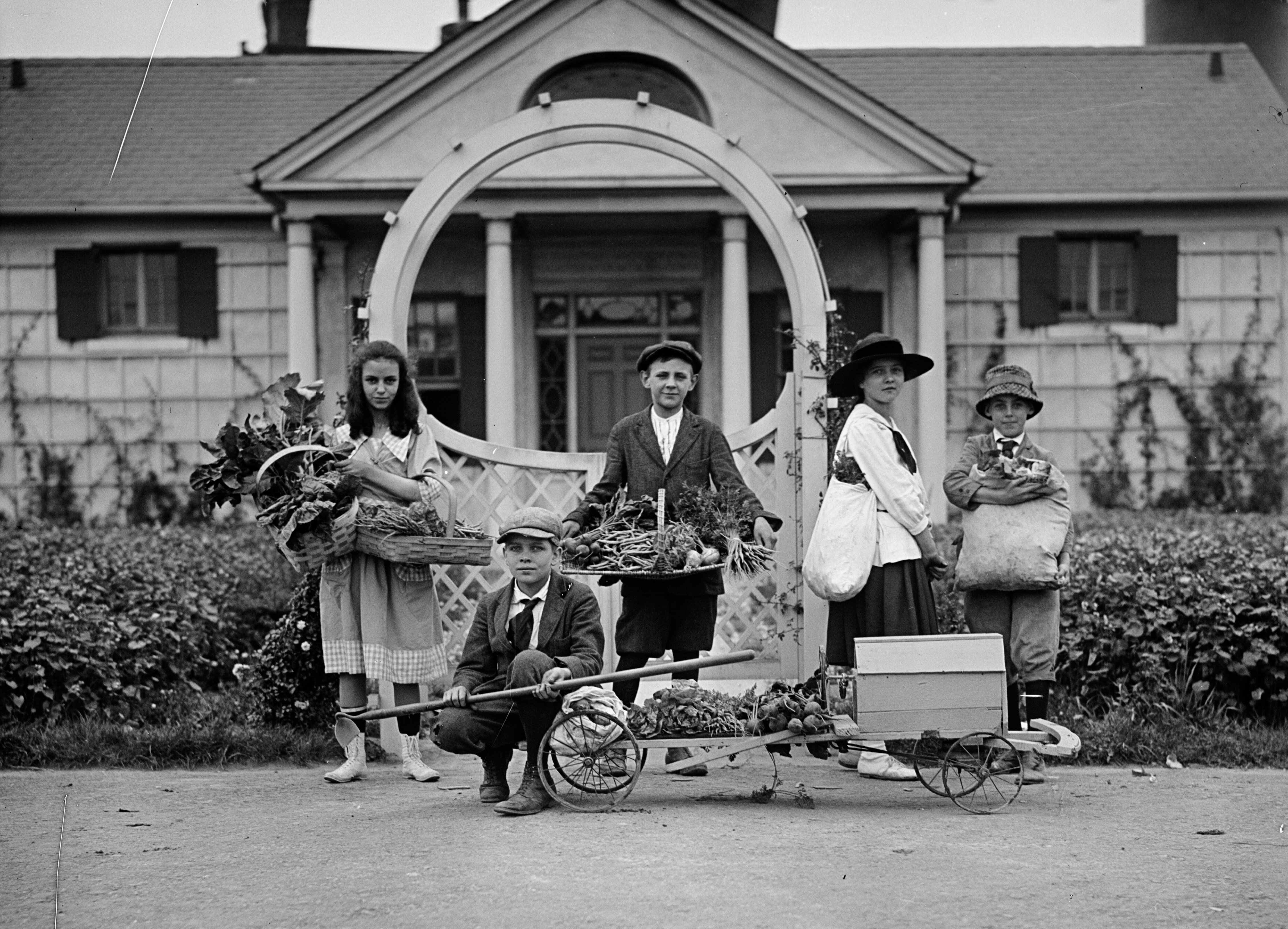
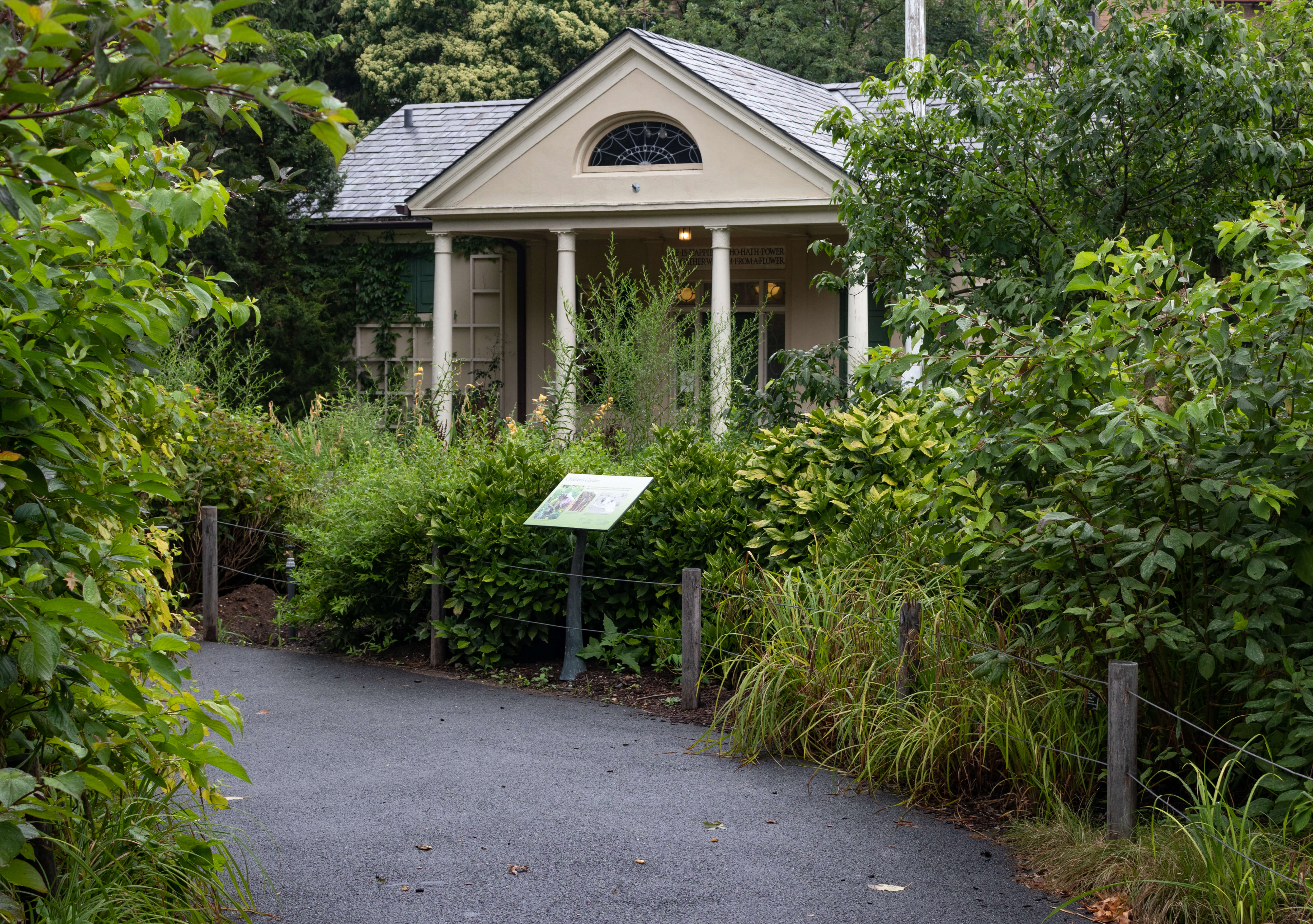
To both celebrate and emphasize that point, Gager sent out letters to colleagues asking them for the names of the most important botanists in history. Kendall’s building was modeled after the vernacular churches of Lombardy in Italy. It is a Greek cross with a cupola at the center join. The building is clad in stucco with terra-cotta trim and originally had Spanish terra-cotta roofing tiles. A decorative frieze under the eaves is inscribed with 68 names, including Darwin and Linnaeus.
The first section of the building opened for business in 1913. Although the entire structure had been planned and designed, a lack of funding prevented further construction until 1916. This southern wing of the building opened a year later. The entire building housed a physiological lab, an elementary lab, a photographic operating room and dark room, research rooms, an assembly room, an herbarium, and a library with basement storage for both exhibits and library materials.
While science fueled the building’s activities, the gardens were always the public draw. In 1912, the Brooklyn Institute hired Harold Caparn as landscape architect. He would guide the development of the garden until 1945, instituting some of its best-known features.
The garden always emphasized the importance of education. Taking the hands-on cue from their sister organization, the Brooklyn Children’s Museum, Caparn created the Children’s Garden in 1914. It was a place where children could get their hands dirty and learn about plants in the process. It included a one-acre garden where children could plant and grow their own vegetables. The program became a prototype for children’s gardens across the country and continues to this day.
The Japanese Hill and Pond Garden is perhaps the garden’s most photographed feature. Designed by Takeo Shiota in 1915, it was paid for in part by a generous donation by Alfred Tredway White, who had been one of the original garden donors. It was the first public Japanese garden in the United States.
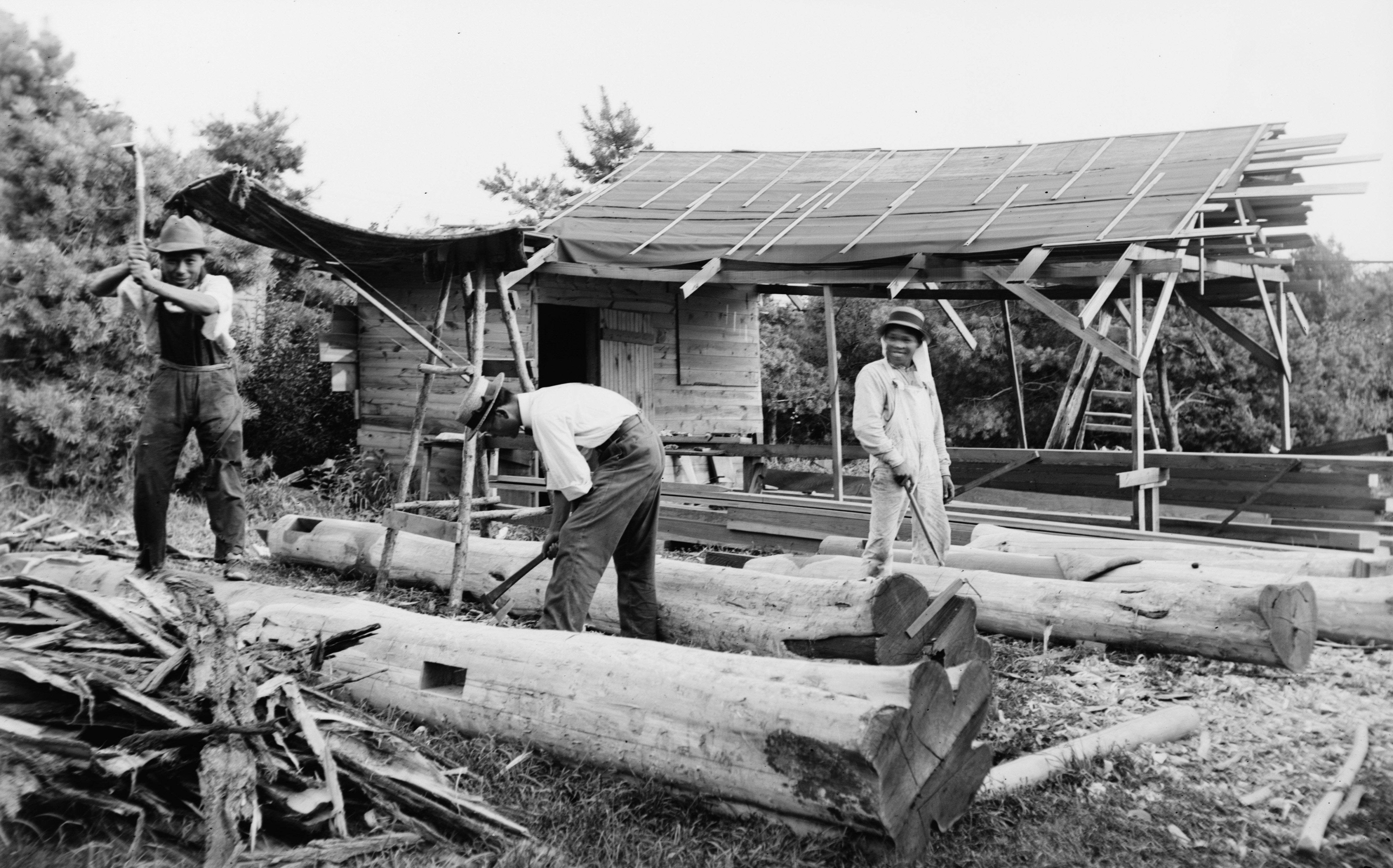
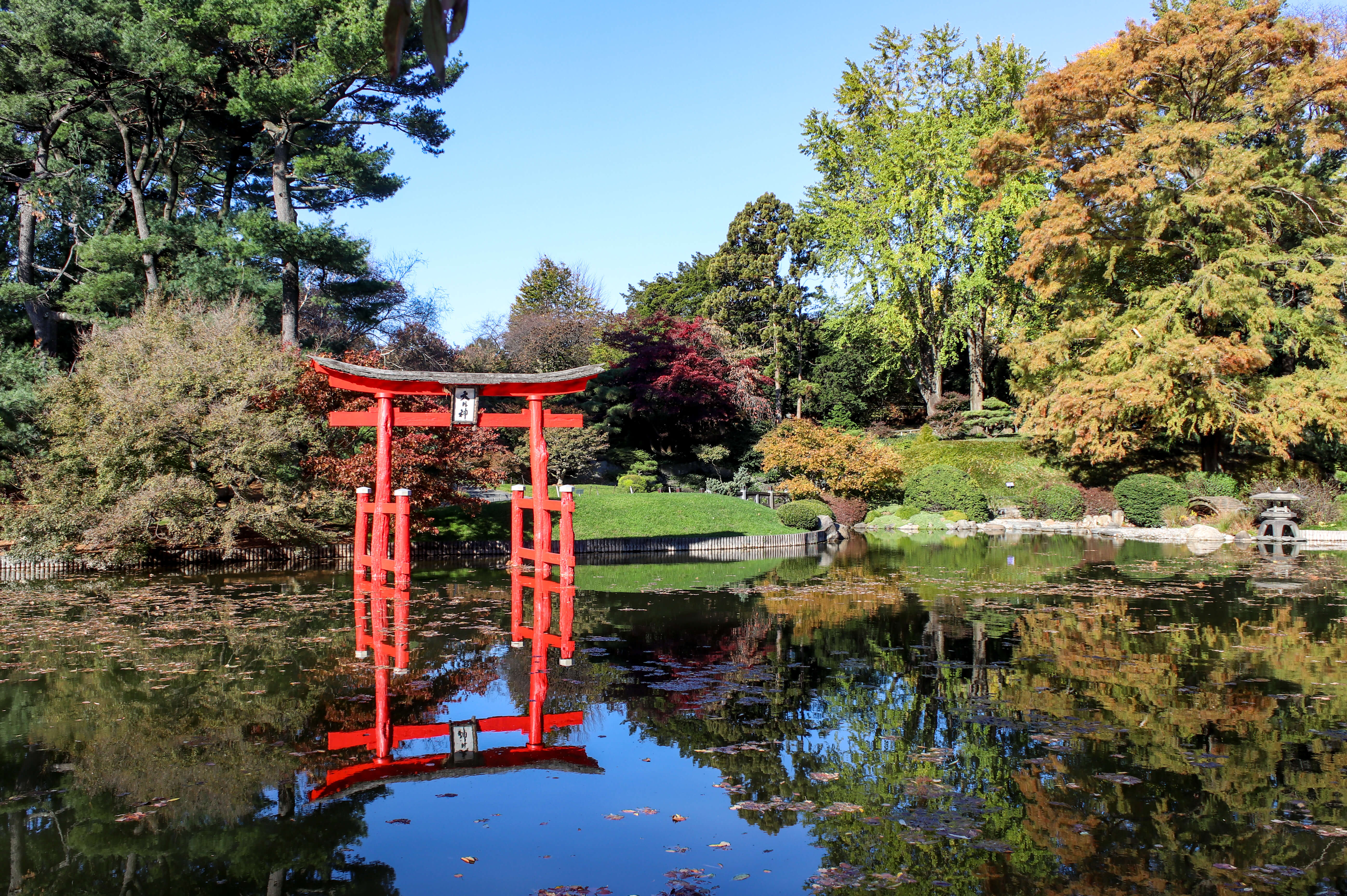
The three-acre garden was entirely constructed with carefully placed stones, winding paths connecting hills, a waterfall and an island. The pond, filled with Japanese koi fish, was created from a pool left by the glacier. The first cherry trees, gifts from the Japanese government, were planted after World War I. The famous Cherry Walk, featuring more than 200 trees in 42 Asian and cultivated varieties, is one of the foremost cherry blossom sites outside of Japan. It was planted in 1941.
In 1917, the Rock Garden was built, using glacial rocks and stone from the site. The Louisa Clark Spencer Lilac Collection, with more than 150 species of lilac, was also completed that year. The Laboratory and Conservatory were also dedicated in 1917. And the same year also saw the creation of the Botanic Garden Auxiliary.
There are so many specialty gardens and attractions to mention. They include gifts from generous patrons as well as important gardens and exhibitions of rare and exotic species and plants. They were all phased in over the twentieth century, and most were initiated under Caparn. The Shakespeare Garden, built in 1925, features plants mentioned in William Shakespeare’s works. The 1928 Cranford Rose Garden features more than 1,000 types of roses, and Magnolia Plaza, established in 1932, delights visitors in the spring with the blossoms of 17 types of magnolias.
During the Great Depression, WPA employees built the 1938 Herb Garden, based on the design of a 1577 Elizabethan knot garden. The next year, WPA labor built the Italian-inspired Osborne Garden. The first garden in the U.S. for the visually impaired, the Alice Recknagel Ireys Fragrance Garden was designed in 1955 by its namesake, a landscape architect. It features plants that can be touched as well as smelled. It even includes a fountain where guests can wash their hands after rubbing the leaves and plants. The plants have also been chosen to be accessible to people in wheelchairs.
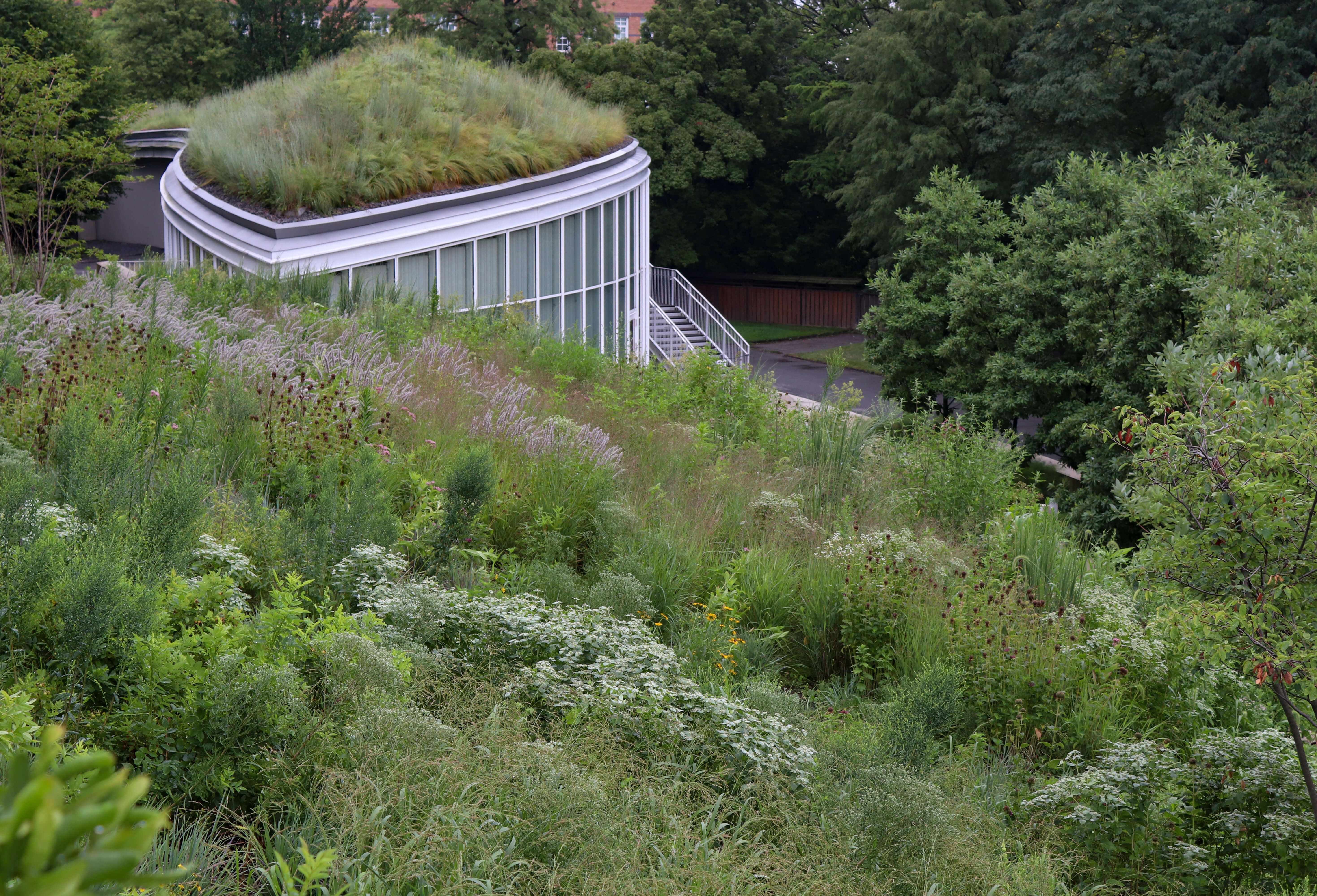
For many, a visit to the Botanic Garden is not complete without touring the Steinhardt Conservatory. The 1988 Davis, Brody & Associates-designed complex joins the restored Victorian-style Palm House to three new and modern greenhouse structures that replaced the original greenhouses. This award-winning complex houses the Bonsai Museum, the Warm Temperate Pavilion, the Tropical Pavilion, the Trail of Evolution, the Aquatic House, the Desert Pavilion and the Palm House. In 2006, the highlight of the conservatory was the rare blossoming of the odiferous Sumatran corpse flower, an event that boosted attendance to the always popular garden.
Until 1996, entrance to the Botanic Garden was free. However, a lack of city, state and other funding caused the garden to charge admission to continue its mission. Today, the garden is also supported by membership and fundraising events as well as government and private funding. It offers outreach programs for children and adults, emphasizing gardening and environmental conservation. Plant swaps and sales, events such as the annual Hanami Cherry Festival and other events make the garden one of Brooklyn’s busiest public venues. The beautiful Palm House can also be rented for weddings and events.
From a marshy refuse heap to one of the world’s best collections of specialty gardens, the Brooklyn Botanic Garden remains one of the borough’s finest institutions. Today, the Brooklyn Museum, Botanic Garden, Central Library, Grand Army Plaza and Prospect Park form a civic center that welcomes millions of visitors, both local and tourists. Brooklyn’s turn-of-the-last century movers and shakers would be pleased to see that their vision of Institute Park was realized and is greatly treasured by all.
Editor’s note: A version of this story appeared in the Spring/Summer 2020 issue of Brownstoner magazine. It was completed before the pandemic.
Related Stories
- First Visitors Return to the Brooklyn Botanic Garden as It Reopens After Pandemic Closure
- A Sweeping Vista Unveiled With the Opening of the Overlook at Brooklyn Botanic Garden
- Cherry Tree Blooms Greet New Water Conservation Project at Brooklyn Botanic Garden
Sign up for amNY’s COVID-19 newsletter to stay up to date on the latest coronavirus news throughout New York City. Email tips@brownstoner.com with further comments, questions or tips. Follow Brownstoner on Twitter and Instagram, and like us on Facebook.





What's Your Take? Leave a Comment